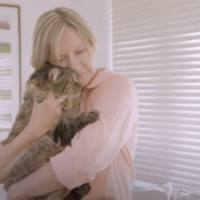7 Steps to a Perfect Pet – and being a perfect pet owner!
Like people, no pet is perfect! There are a few things that pet owners can do to ensure the best possible relationship with our pet. Here are Pet Problems Solved suggested 7 Steps to a Perfect Pet…
Step 1:
Choose your pet carefully.
Making the correct choice for your lifestyle and life stage is crucial. Dogs need your time. Cats need your attention. Doing your research and choosing a pet that matches your energy levels is the first, and arguably the most important step, in ensuring your relationship will be an enriching one.
Step 2:
Understand your pet’s natural behaviours.
Animals have drives and will try to satisfy these whenever they can. Our pets’ drives are to find food, shelter and companionship and no matter how luxurious their surroundings are, they will always strive for more. This may be why your dog raids garbage bins or your cat wants to share your bed.
Give your pet an opportunity to satisfy their needs – by providing toys to hunt, comfortable spots to snooze and your interaction. Be a responsible owner and remove their drive to find mates by desexing your pet.
Step 3:
Provide positive experiences for your pet.
Introducing your young pet to a variety of positive experiences is essential. This process is known as socialisation and will ensure your pet accepts everything later in life. Animals are continually learning and owners must teach their pet appropriate behaviours. Training your pet to have good manners and to come when called can save you a lot of stress and heartache. Even cats can be trained. All it takes is a motivating reward (treats, praise, pats) and a lot of patience.
Step 4:
Ensure your pet is a mannered member of society.
You may love your pet but do your friends, your neighbours and people in your local park? Ensure that your pet is safely enclosed when on your premises and that they behave when outdoors. Off-leash areas provide great opportunities for dogs to have fun and play with other dogs but you still have to be under control of your dog. Can you recall your dog? If not, practice this at home.
Step 5:
Look after other animals.
Your pets may be pampered but not all animals are as lucky as yours. Not everyone has the time to play with their pet all day. Local animal shelters are full of animals looking for homes. Consider donating a little of your time or money to help other animals in need. Take your neighbour’s dog for a walk. Volunteer at a local shelter. Helping others will help you appreciate your relationship with your pet even more.
Step 6:
Enhance your relationship.
To truly enjoy your pet, it may help to take the interaction one step further than a walk, a feed or a cuddle. All sorts of activities exist these days for dogs and their owners – agility, fly ball, dock diving and dancing with dogs are just a few. If your dog (or sometimes cat or bird) is friendly, consider volunteering together as a therapy team and allow people in hospitals or aged care facilities to enjoy your pet too.
Step 7:
Solve any problems.
No pet is perfect and problems may arise at some stage of our pet’s lives. Barking; toileting issues; anxiety, fears and phobias; aggression; destructive behaviours or simply annoying ones such as pulling on the leash or jumping up are all common behaviour problems. Most can be solved, so seek help and keep your relationship with your pet as positive as possible.
Find out more about Cat Behaviour Problems
Find out more about Dog Behaviour Problems
Try to do as many of these steps to a perfect pet as possible. You and your pet may never be perfect but at least we are striving towards the best human-animal relationship possible.
Enjoy your pets!
About the author:
Dr Jo Righetti is owner of this website Pet Problems Solved. This is her business, helping people understand pets. Dr Jo works with a variety of companies and organisations, as well as regular media appearances. Jo has written a range of pet behaviour books. More info about Jo here.
Join us on Instagram or Facebook.
More on people and pets
- Do Cats and Dogs like to Look at Us?
 Do cats and dogs like to look at us? We like to look into the faces of our pets but do cats and dogs like to look
Do cats and dogs like to look at us? We like to look into the faces of our pets but do cats and dogs like to look - Does my cat love me? 7 Signs of cat love and affection
 Does My Cat Love Me? 7 Signs of Cat Love and Affection “Does my cat love me?” A question every cat owner asks at times! Dr Jo
Does My Cat Love Me? 7 Signs of Cat Love and Affection “Does my cat love me?” A question every cat owner asks at times! Dr Jo - Synthetic grass and Pets: Can they work together?
 Synthetic Grass and Pets: Can they work together? Do you find your lawn difficult to take care of? No time with kids? Hassles with pets? Pet Problems
Synthetic Grass and Pets: Can they work together? Do you find your lawn difficult to take care of? No time with kids? Hassles with pets? Pet Problems - Is a Career in Pet Care Right for You? Here’s What You Should Know
 Is a Career in Pet Care Right for You? Here’s What You Should Know Have you always wanted to work with animals? Perhaps you’re starting out in
Is a Career in Pet Care Right for You? Here’s What You Should Know Have you always wanted to work with animals? Perhaps you’re starting out in - A dog’s environment impacts their communication behaviours
 A dog’s environment impacts their communication behaviours New research has confirmed that a dog’s environment impacts their communication behaviours. Dogs generally matched the enthusiasm of their owners!
A dog’s environment impacts their communication behaviours New research has confirmed that a dog’s environment impacts their communication behaviours. Dogs generally matched the enthusiasm of their owners! - What Pets Can Teach Us About Happiness
 What pets can teach us about happiness Are you happy? Is your pet happy? And just what is happiness? The Oxford English Dictionary defines happiness as “The
What pets can teach us about happiness Are you happy? Is your pet happy? And just what is happiness? The Oxford English Dictionary defines happiness as “The - What Happens to Your Pets in the Event of Your Death?
 What Happens to Your Pets in the Event of Your Death? Death is not something that many of us like to think about but it is a
What Happens to Your Pets in the Event of Your Death? Death is not something that many of us like to think about but it is a - Deciding the Right Time to Say Goodbye to Your Family Pet
 Deciding the Right Time to Say Goodbye to Your Family Pet. Never an easy decision but deciding the right time to say goodbye to your pet is an important consideration in any human-animal relationship.
Deciding the Right Time to Say Goodbye to Your Family Pet. Never an easy decision but deciding the right time to say goodbye to your pet is an important consideration in any human-animal relationship. - Love Your Pet Love Your Vet
 Love Your Pet Love Your Vet Meet Dr Nadine Hamilton, a registered psychologist who is passionate about veterinary wellbeing. Dr Nadine is also the founder of charity
Love Your Pet Love Your Vet Meet Dr Nadine Hamilton, a registered psychologist who is passionate about veterinary wellbeing. Dr Nadine is also the founder of charity




















Comments are closed.